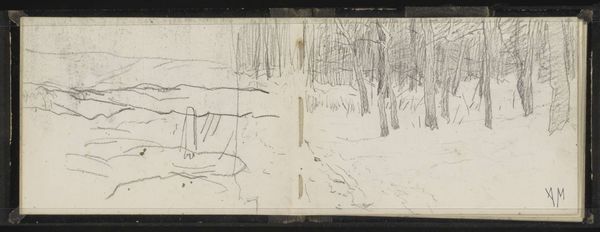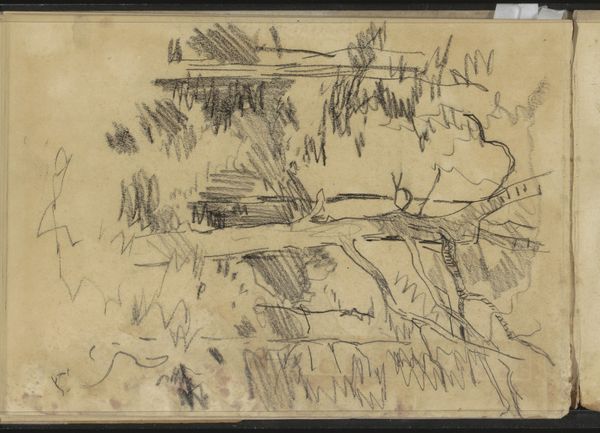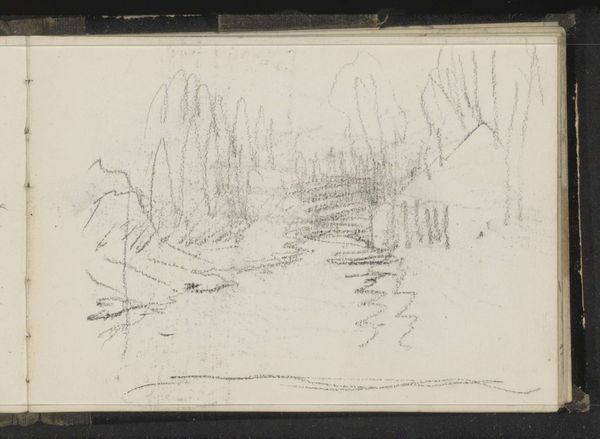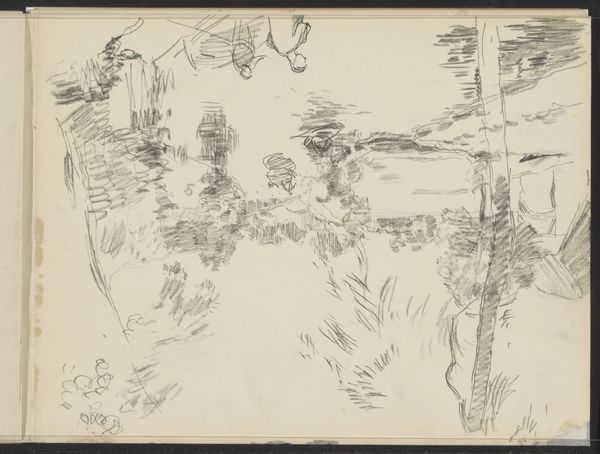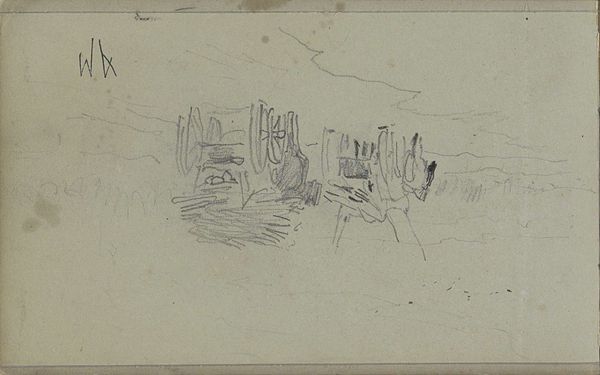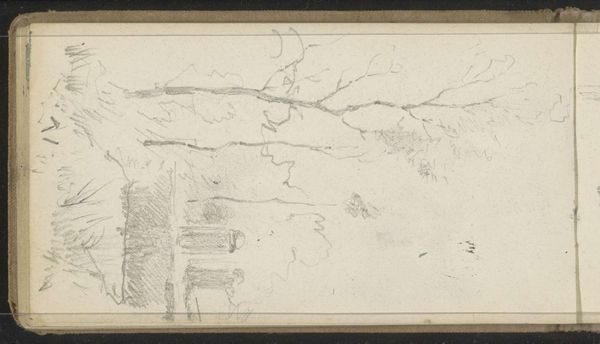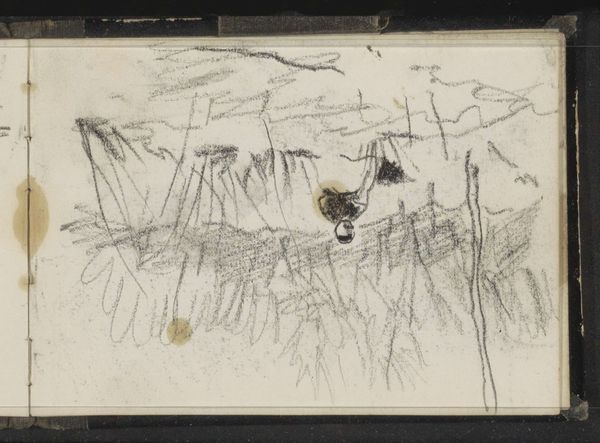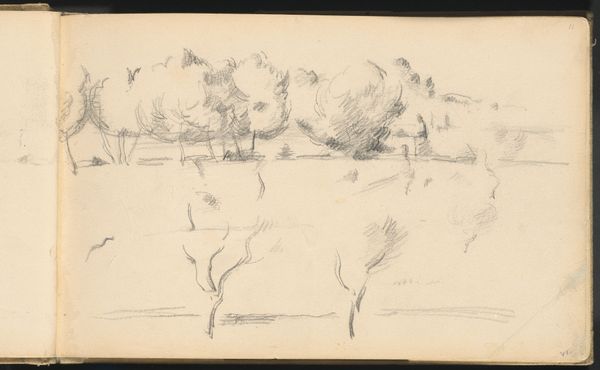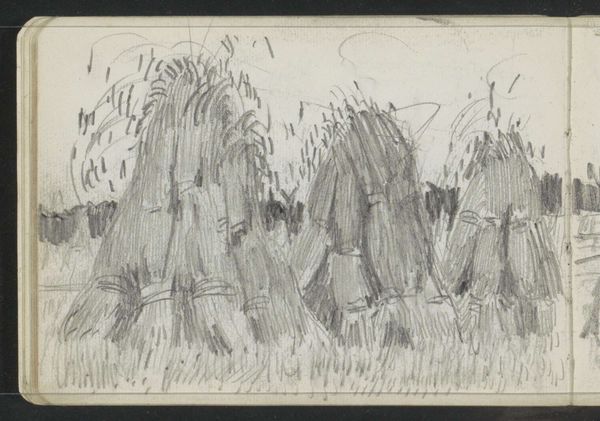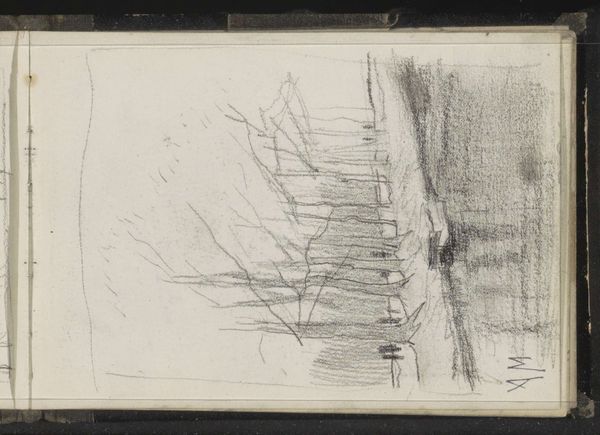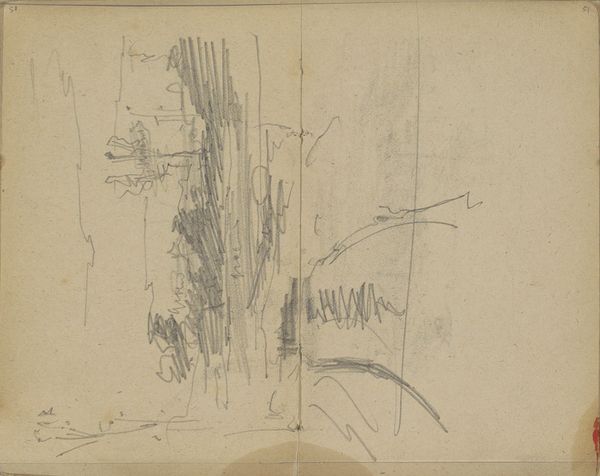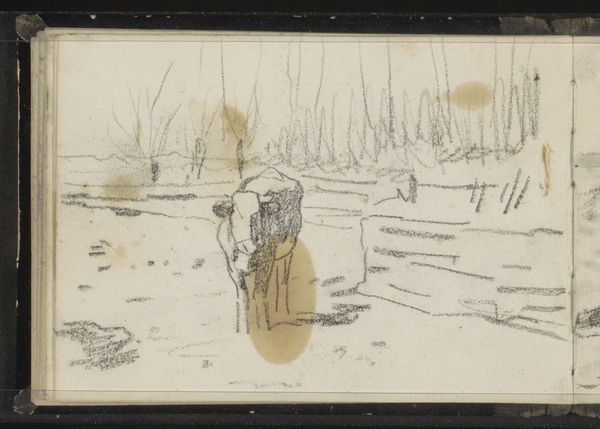
drawing, pencil
#
drawing
#
amateur sketch
#
quirky sketch
#
dutch-golden-age
#
impressionism
#
sketch book
#
incomplete sketchy
#
hand drawn type
#
landscape
#
personal sketchbook
#
sketchwork
#
pen-ink sketch
#
pencil
#
sketchbook drawing
#
sketchbook art
#
realism
Copyright: Rijks Museum: Open Domain
Editor: Here we have "Trees and Bushes," a pencil and graphite drawing by Anton Mauve, dating sometime between 1848 and 1888. It looks like a sketch from a notebook, quick and simple. What strikes me is the almost frantic quality of the marks. What can you tell us about it? Curator: This piece draws attention to the artist's hand, literally. Look at the rapid application of pencil on paper, a readily available and relatively inexpensive medium at the time. This speaks volumes about accessibility and the democratization of art production during the rise of Impressionism. Where would this sketch have been created, and for whom was it intended? Editor: That's interesting. I hadn't considered the socioeconomic aspect of sketching materials. So, instead of focusing on the trees themselves, we look at the availability of graphite and paper. Was Mauve making a statement about the art world by using such simple materials? Curator: Perhaps not a deliberate statement, but certainly a reflection of changing artistic practices. Artists like Mauve were moving away from the rigid structures of academic painting and embracing the immediacy of the sketch, created en plein air. Consider the labor involved in creating large-scale landscape paintings versus these quick, portable studies. What does that shift in labor signify? Editor: It seems like a move towards a more individualistic approach. Instead of the grand, historical landscapes, the artist is capturing a personal moment. Also the use of sketchbooks highlights the ready availability of materials for personal use. Curator: Precisely. And don’t overlook the relationship between art and the burgeoning paper industry during the 19th century. The increased production and distribution of paper enabled artists to experiment more freely. How does that interplay of materiality and artistic expression impact our understanding of art history? Editor: So, by looking at the pencil, paper, and the speed of the sketch, we learn more about the art world in general at that time. It shifts our attention to what goes into creating a piece like this. Thank you for pointing that out. Curator: Indeed. And by questioning the means of production, we gain a more nuanced understanding of the artwork itself.
Comments
No comments
Be the first to comment and join the conversation on the ultimate creative platform.
